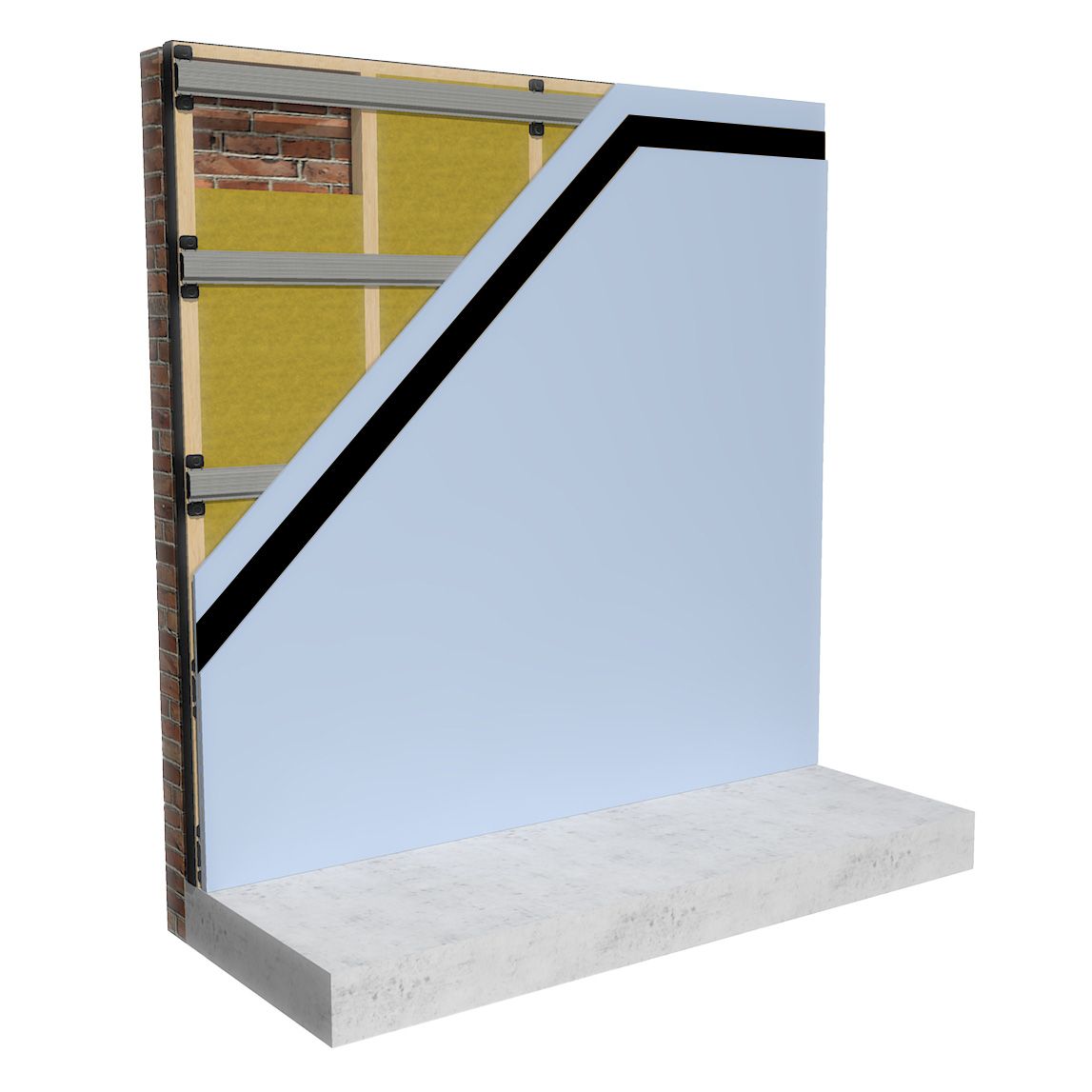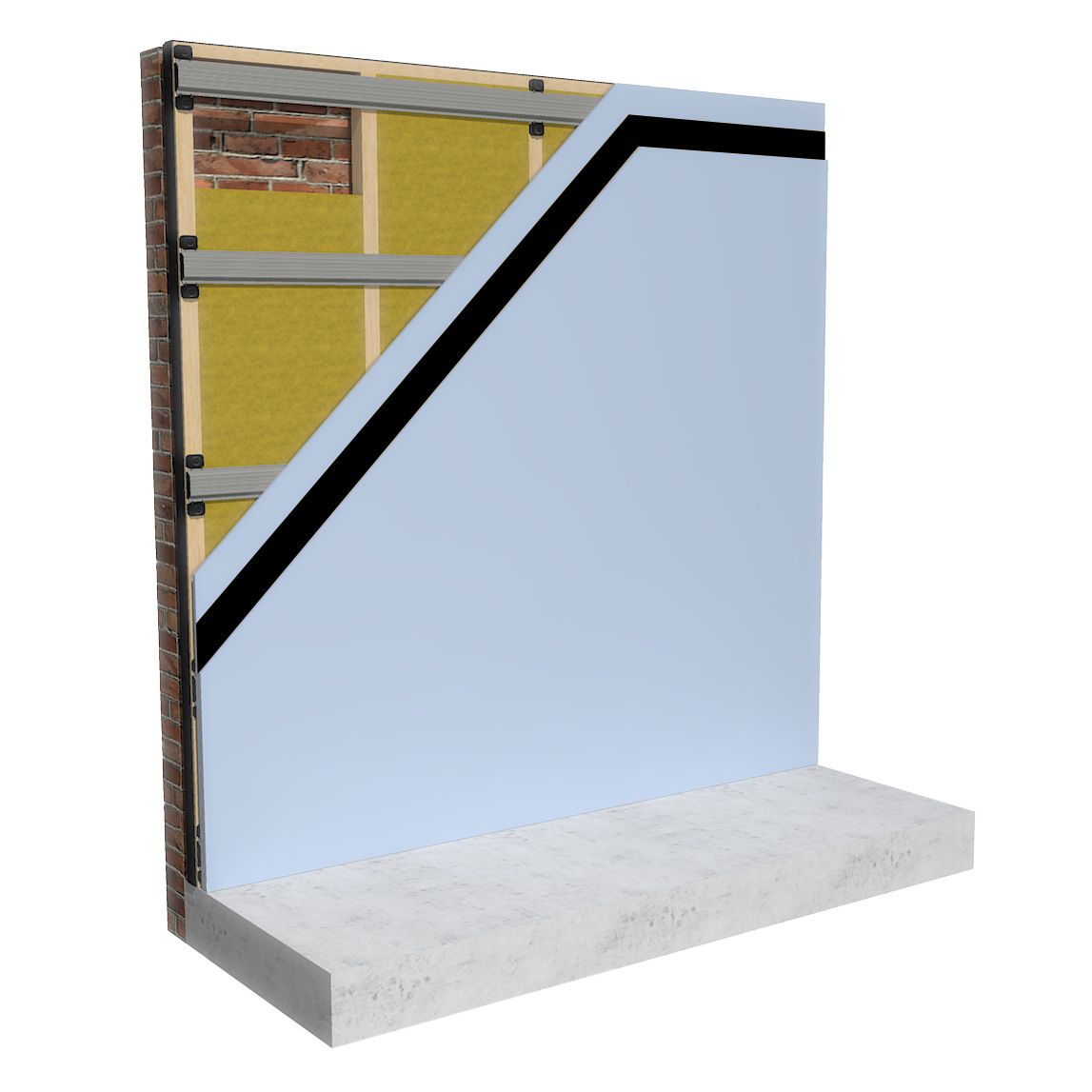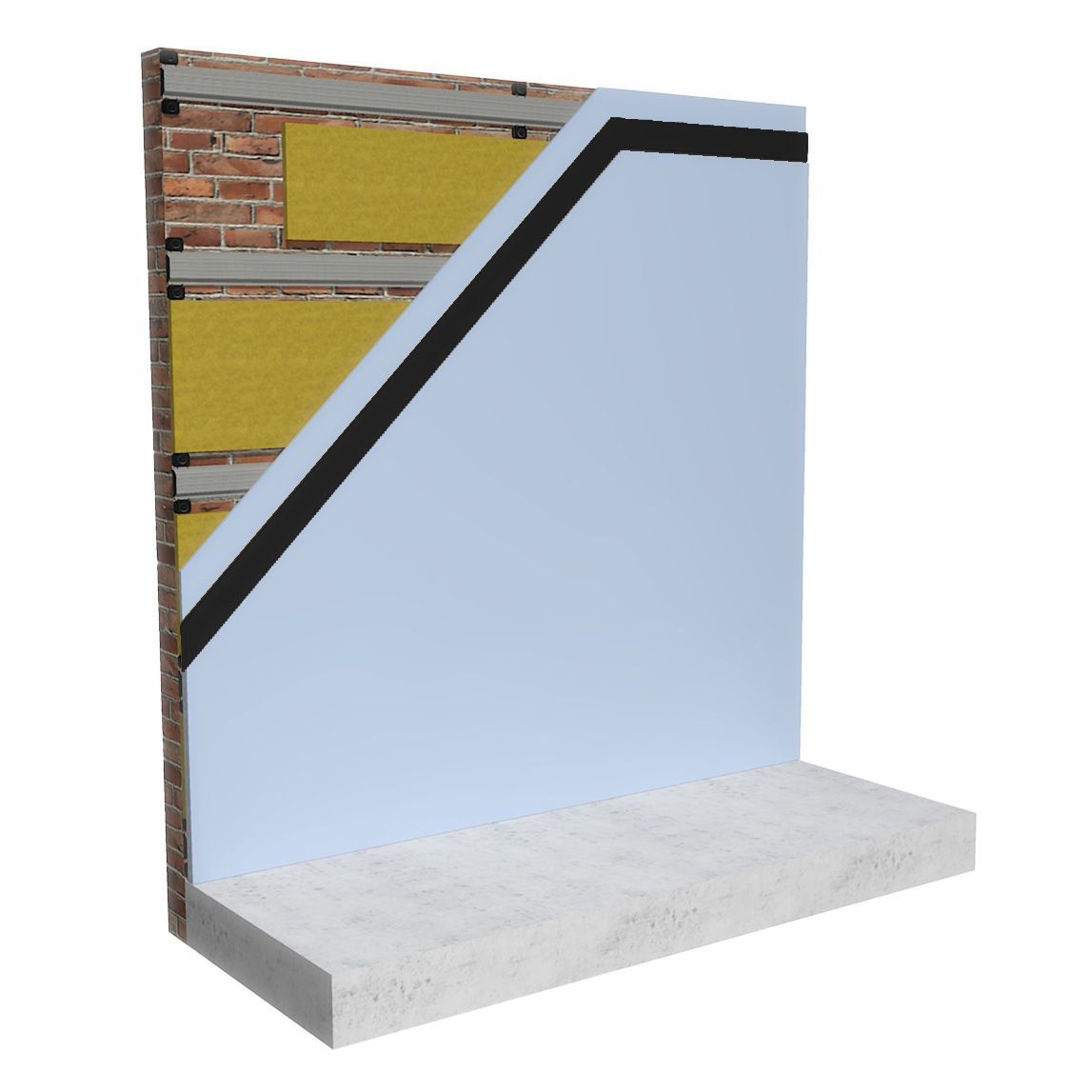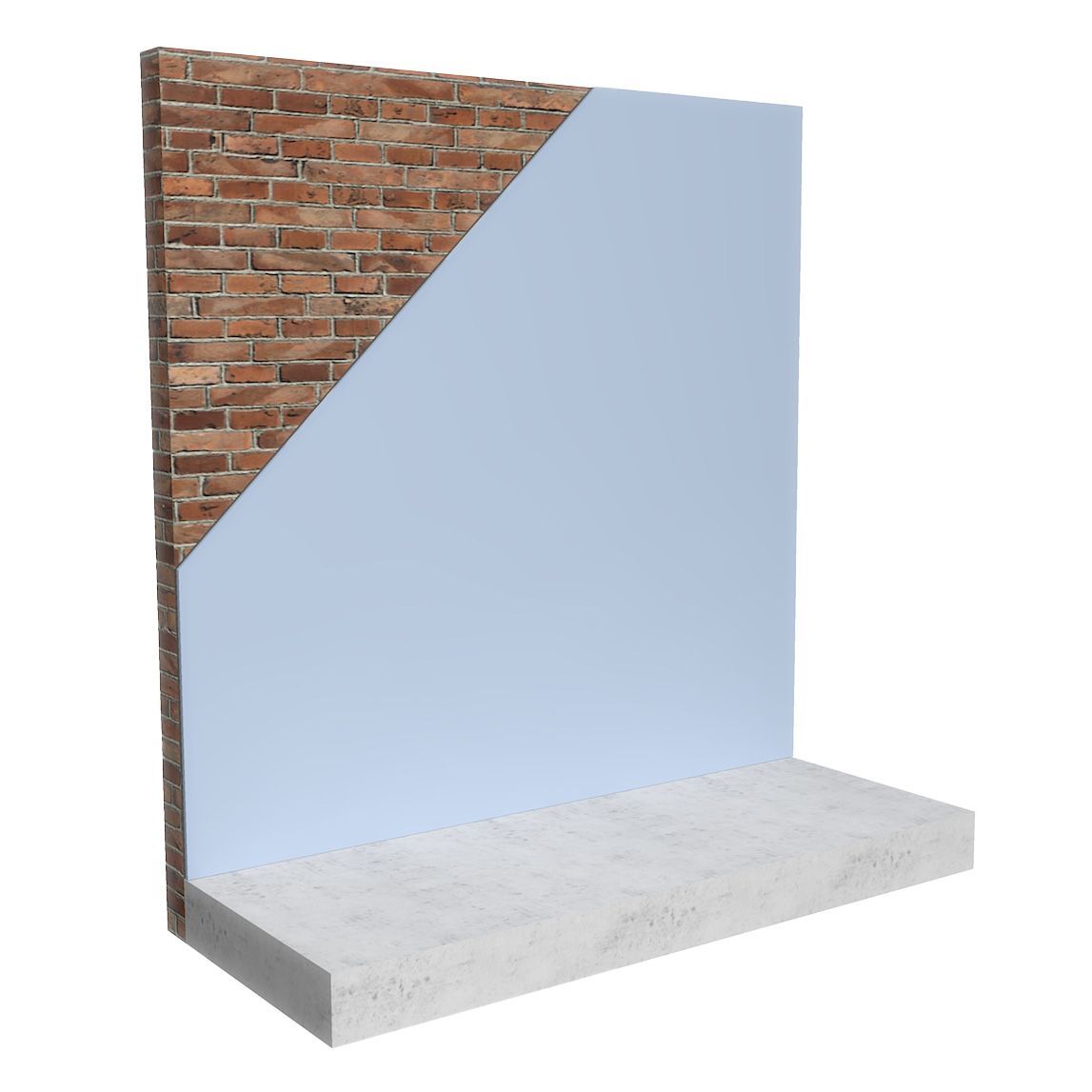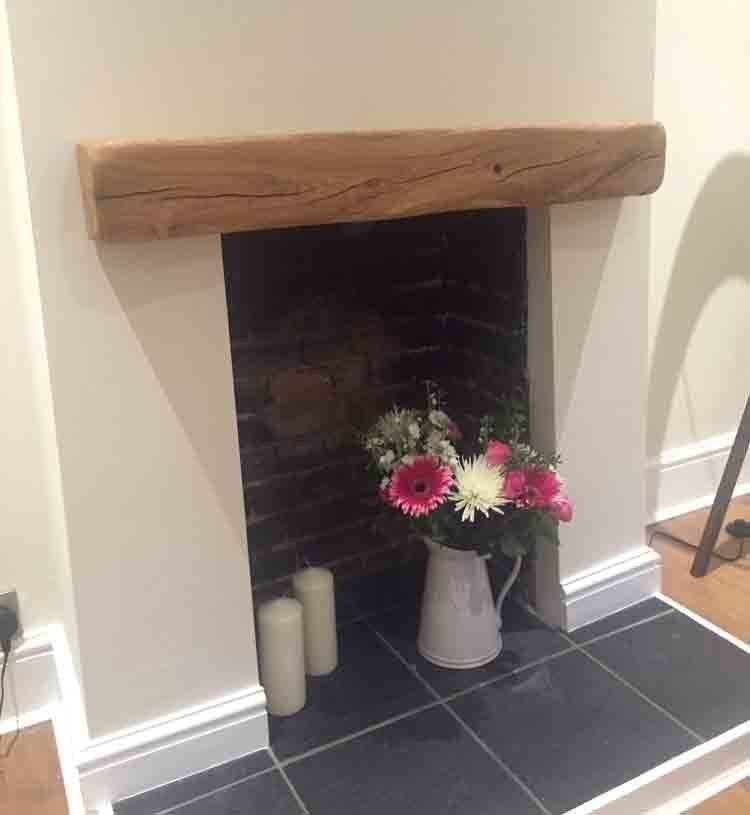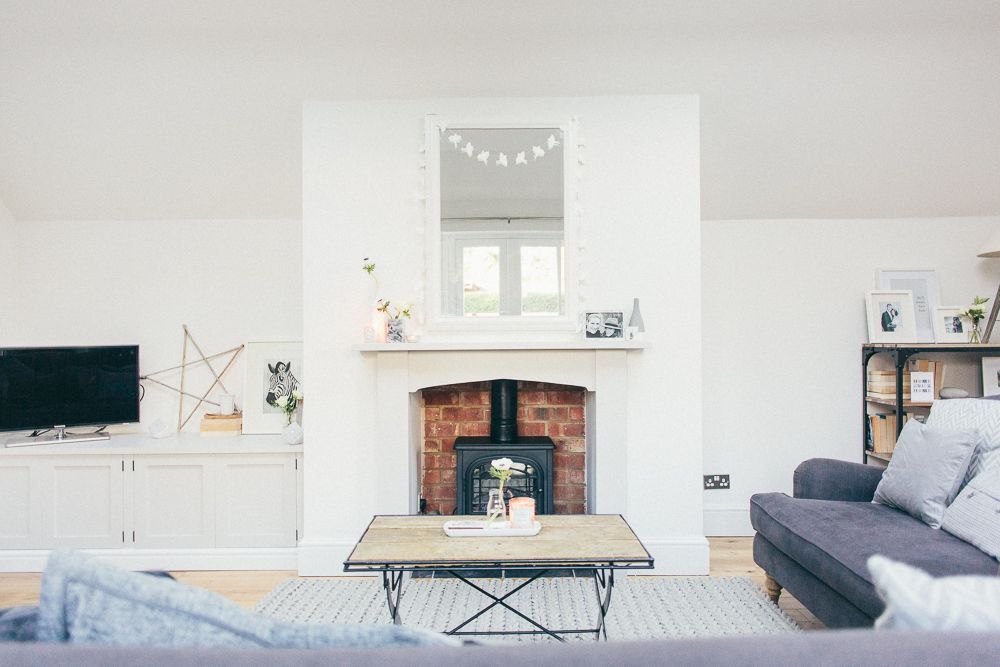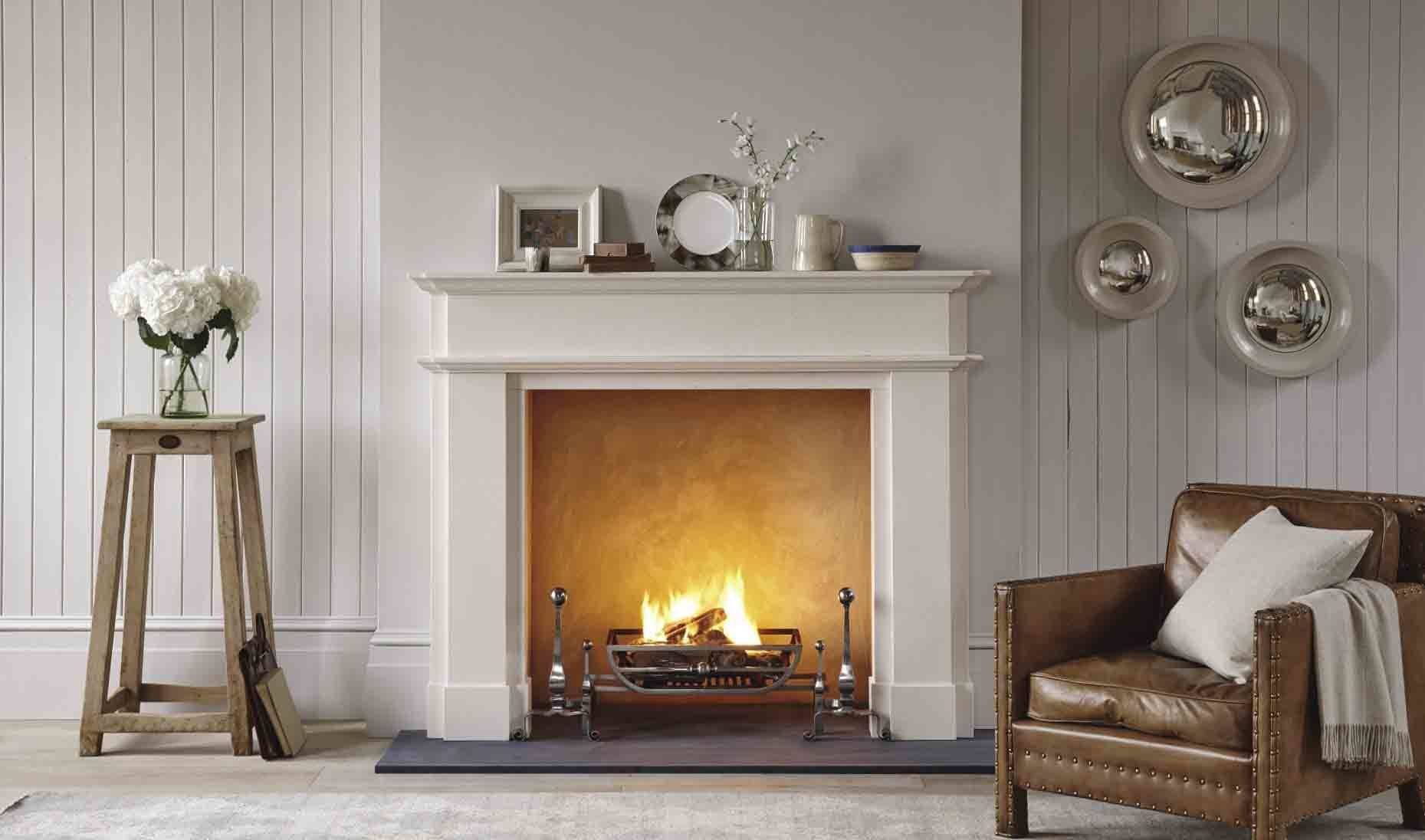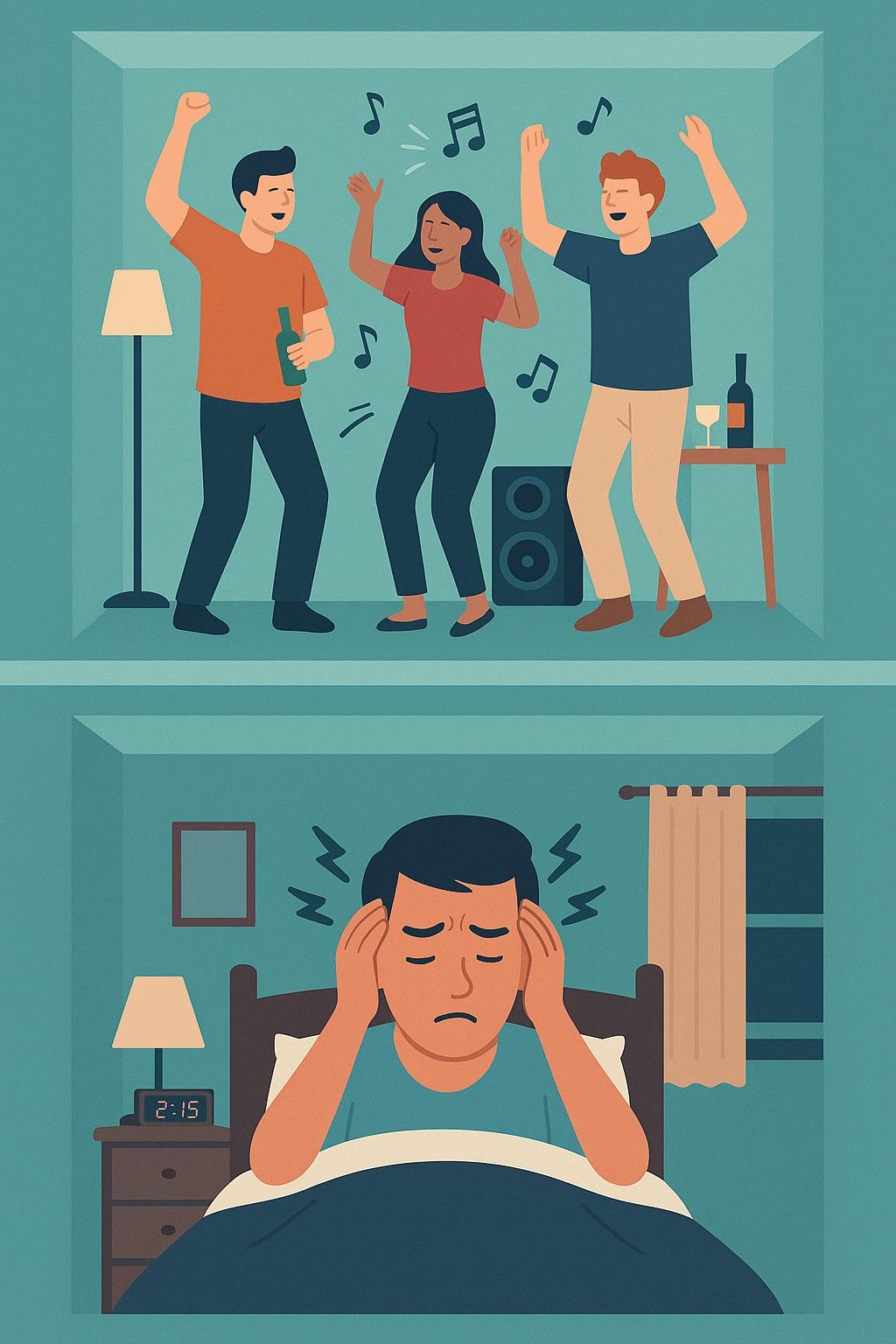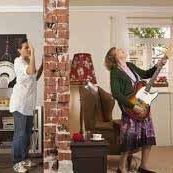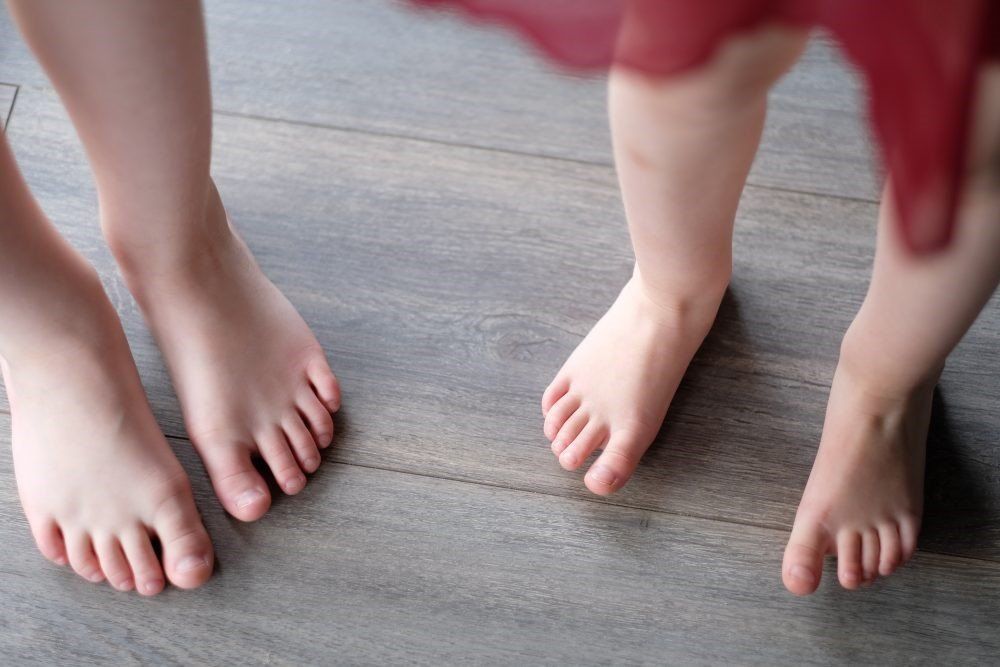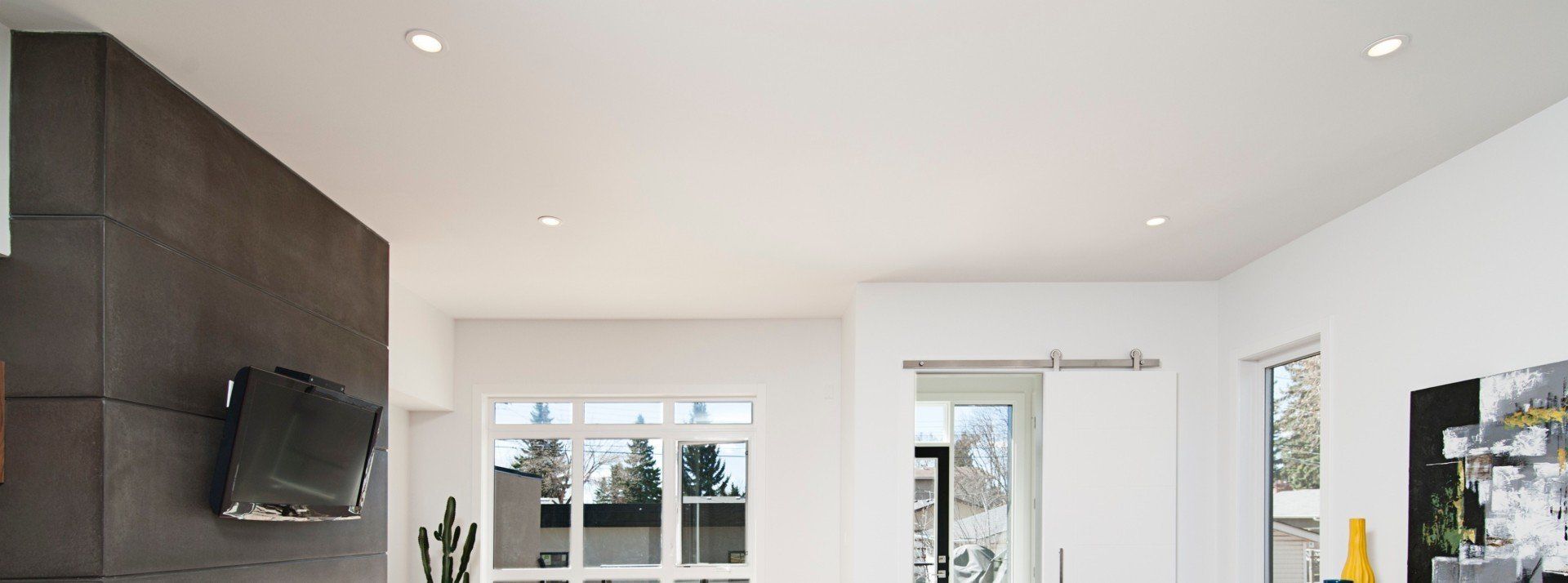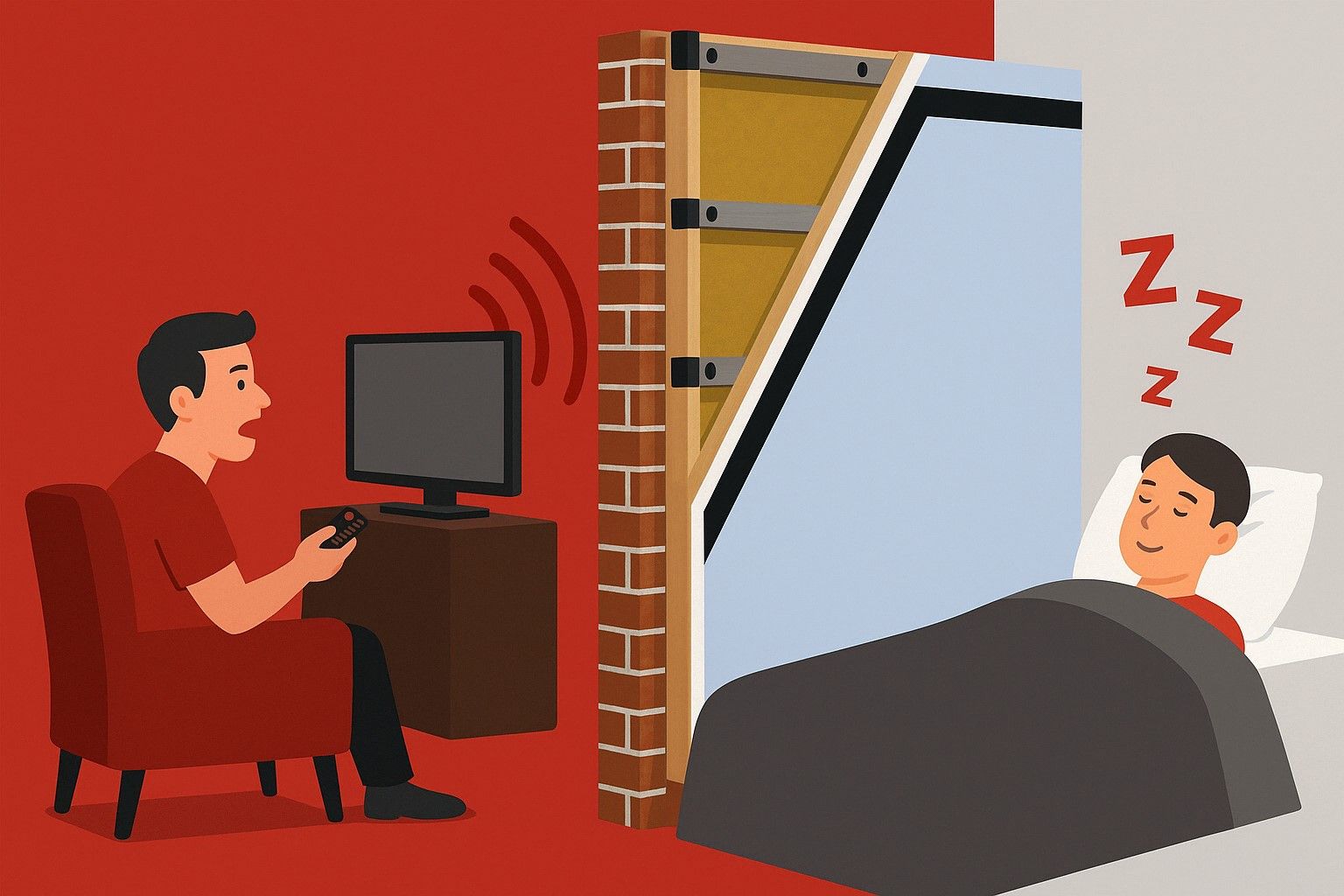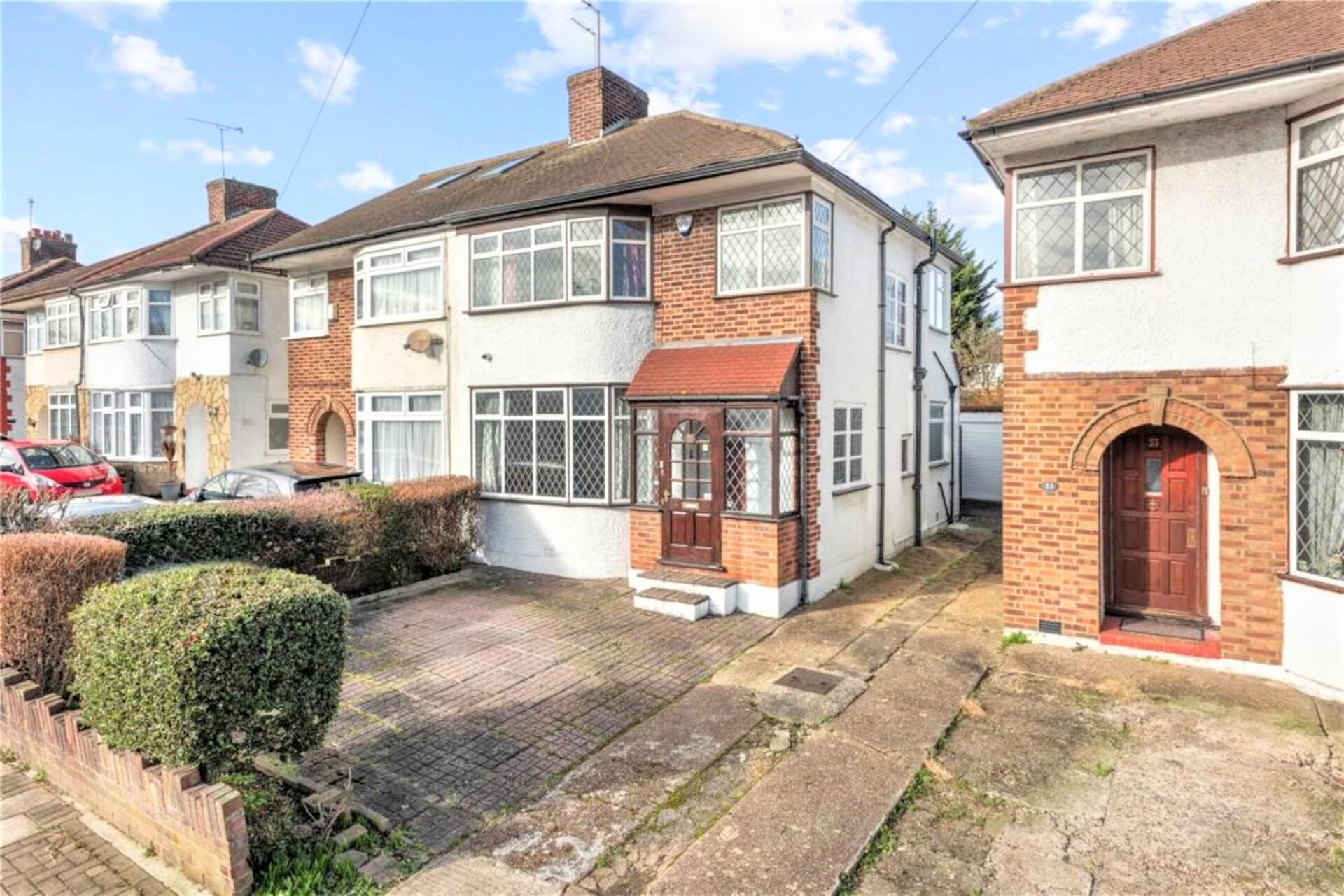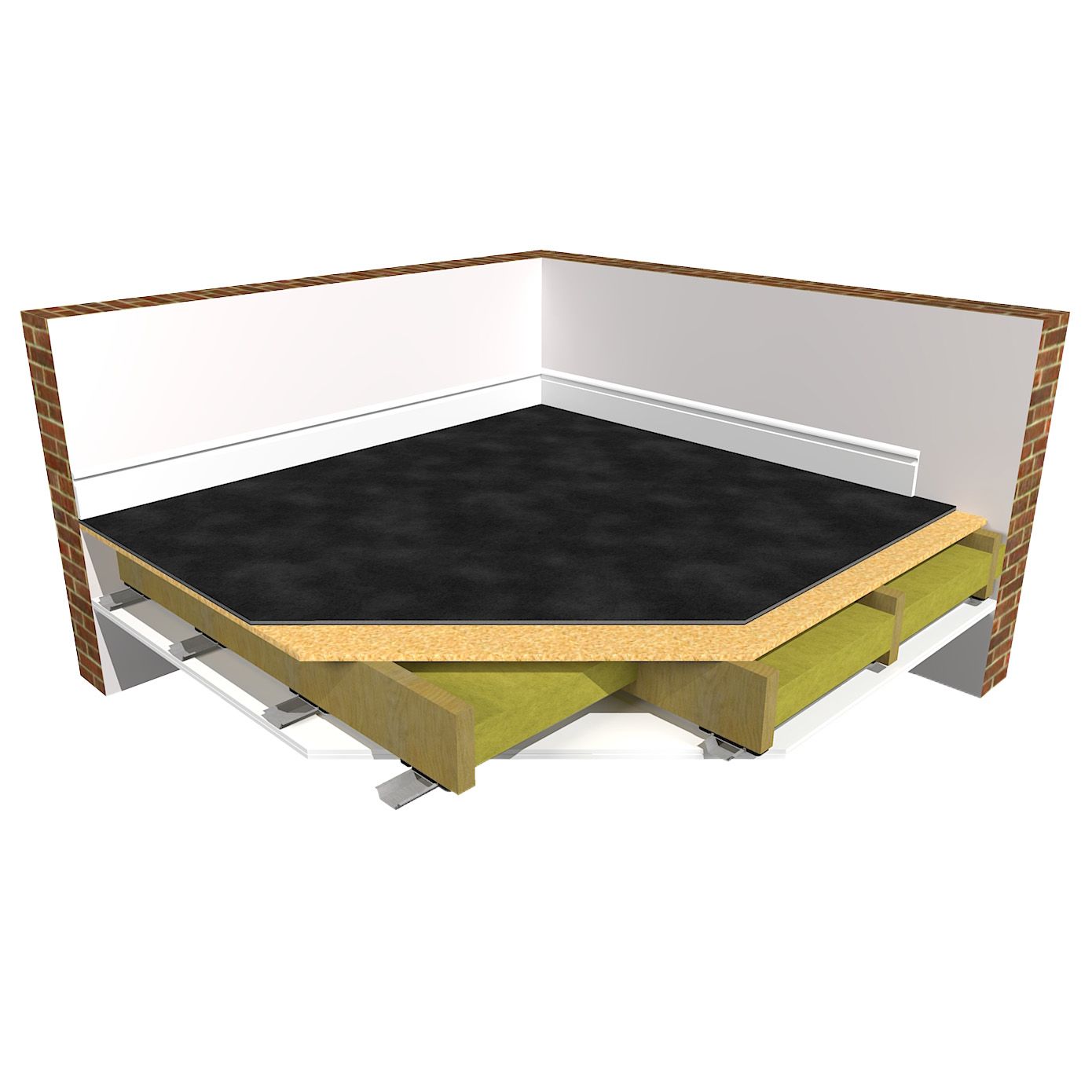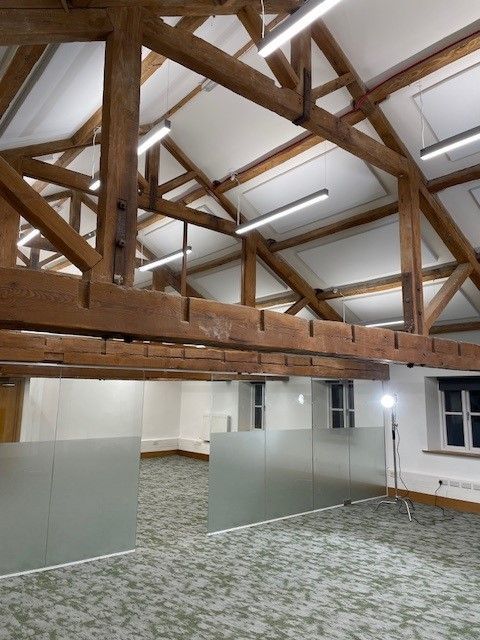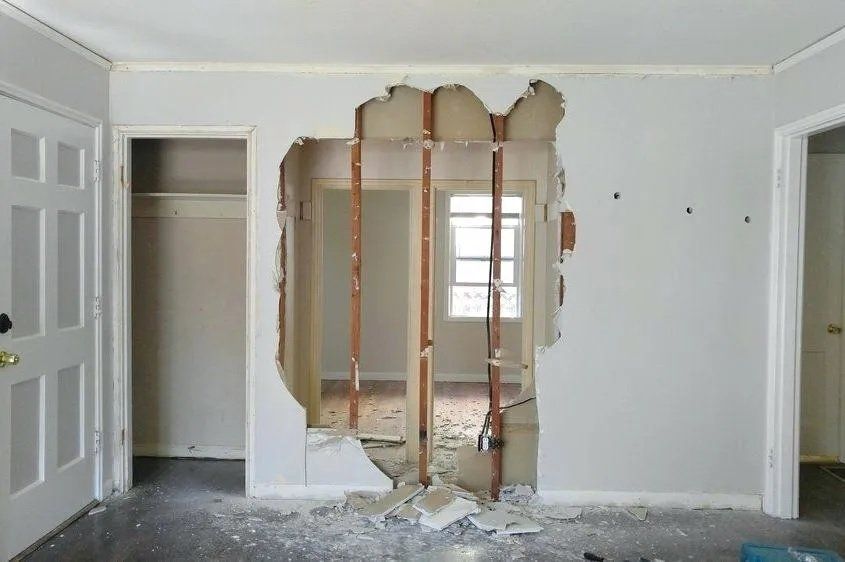How to soundproof a chimney
Chimney breast soundproofing
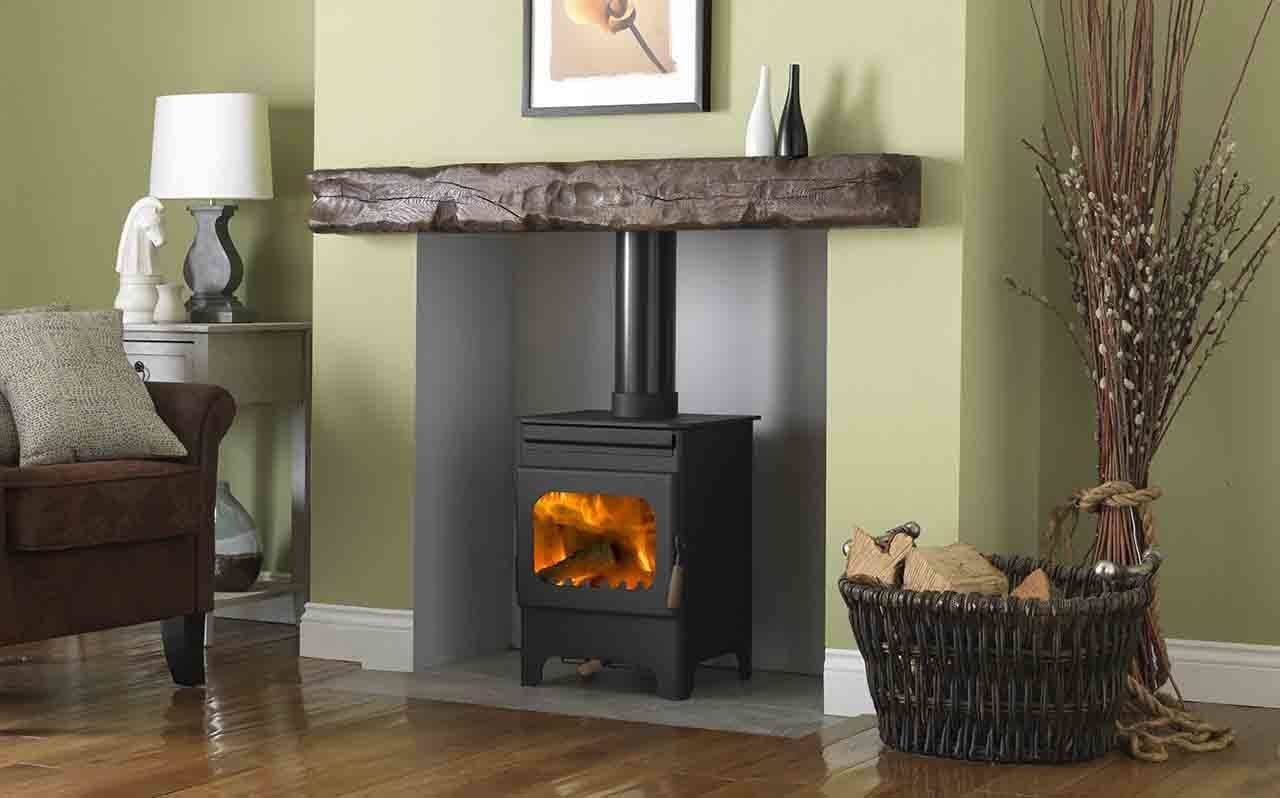
When soundproofing the alcoves of a wall, in most cases the chimney breast doesn't need the same level of sound insulation. Effective soundproofing is all about adding mass, so to soundproof a wall, heavy and dense materials are added to the wall. Chimney breasts are normally constructed of a double layer of fire bricks which are far heavier and denser than standard bricks (normally) used in the alcoves. More often than not, there is also a small air gap behind and then the same double layer of fire bricks on your neighbours' side. This extra mass (more so than the rest of the wall) naturally makes the chimney more soundproof than the alcoves. Therefore, in nine out of ten cases, it is only the alcoves that require soundproofing.
However, there are exceptions, such as:
- Your neighbour has removed the chimney breast on their side
- The flue has eroded over time and sound is passing through from your neighbours (through small gaps in their flue into your flue)
- The current chimney may not be an original construction and may have been added at some point in the build's history
- The chimney may have been widened to accommodate a stove (involving removal of some of the fire bricks)
How to soundproof the alcoves of a chimney
To soundproof the alcoves of a chimney, there are 3 key areas to address:
1. Improve the mass of the wall. This is usually achieved by adding different high mass / density products.
2. Improve the ability of the wall to absorb sound energy and vibrations. Without this, the addition of any mass will have very little impact.
3. Use different materials of high mass, as different materials perform better for different sound frequencies. Therefore, using a combination of high mass materials will always perform better than simply using more of the same material.
Below are the three most popular wall soundproofing solutions when looking at effective sound insulation for chimney alcoves. Think about how much sound you want to reduce, i.e. how loud and what type of noise you are trying to block and how much space you can afford to lose. Generally, the higher performing the system, the more space it takes up.
1. ReductoClip™ Independent Wall System (120mm)
The highest performing system for party walls which is used not only in households with excessive noise problems, but also in high decibel situations, such as recording studios and home cinemas. The ReductoClip Independent System is completely de-coupled from the offending alcove wall, making it extremely difficult for vibration energy to travel through. The system also adds a lot of extra mass to the alcove walls to reduce airborne sound.
This is the ideal sound insulation for walls and all noise problems, including excessive noises such as very loud music from noisy neighbours, shouting, babies crying and very loud TV noise and impact noises.
How to soundproof alcoves using the ReductoClip Independent Wall System
2. ReductoClip™ Direct To Wall System (60mm)
If you don’t have 120mm of space and need a slimmer sound insulation system within your alcoves, then the same ReductoClip system as above can be used. This time installed directly onto the alcove walls, (without using the independent frame in front of the wall). This will reduce space loss within the alcoves to an incredibly slim 60mm, and still maintain a good reduction in both airborne and impact sound performance. Although a step down in performance from the full 120mm version, the system offers an excellent soundproofing compromise on space loss v’s performance.
How to soundproof alcoves using the ReductoClip Direct to Wall System
3. SoundBoard4™ (30mm)
The SoundBoard 4 offers a good performance for standard household noise. This direct to existing wall system is very easy to install, taking up just 30mm of space. The different layers that make up SoundBoard4 work by adding mass to the wall and by improving the walls ability to absorb sound energy. The final layer is an acoustic grade plasterboard meaning after installation there is a plaster board finish ready to add a skim coat of plaster to and decorate.
Unlike the ReductoClip soundproofing solutions above, the SoundBoard 4 isn't suitable for impact noise, or bass sounds from music, TV's with speaker systems, deep voices or snoring.
This system is designed for people with space limitations and lower levels of airborne sound. For just 30mm of space loss, there is no better sound insulation system on the market.
How to soundproof alcove walls using SoundBoard4
How to check if a chimney needs soundproofing?
Top tip - if you are unsure if the chimney breast needs soundproofing, put your ear up against the alcove wall and do a simple ear test. Next time you hear noise next door, put your ear against the alcove wall and get a good sense of what you can hear. Then put your ear against the chimney breast and compare. In most cases you will find you don't actually hear the sound coming through. If however you can hear noise through the chimney breast, fear not, simply read on!
Why does a chimney need soundproofing?
Every now and again, especially in older properties, weaknesses can form which allow the sound to get into the flu. This then acts like a chamber for the sound to resonate and amplify in (not dissimilar to shouting down a cardboard tube). Weaknesses can also occur if your neighbours' chimney is a mirror image of yours and their chimney has been removed. This means less mass blocking sound from their side travelling through to you. Weaknesses can also occur when old brickwork and render has become damaged over time, as soundproofing is much like waterproofing and any gaps act as a weakness for sound to travel through.
If your chimney needs soundproofing and you have done the ear test and can hear noise coming through the chimney breast, then depending on the type of fire you have, there are different chimney sound insulation solutions.
Soundproofing a chimney without a fire
If the fireplace exists, but with no fire, then you can soundproof the entire chimney breast. The chimney walls and also (if required) the inside of the chimney (fireplace) with the ProSound™ SoundBoard4™
SoundBoard4 offers a practical solution to soundproof the chimney, even if the ReductoClip system has been used for the alcove walls.
In this instance, where there is no fire in situ, the recommendation would also be to fill the flu with
Acoustic Mineral Wool.
Designed
to offer the highest level of sound absorption in cavity spaces within walls, floors and ceilings. Acoustic mineral wool will also effectively absorb airborne noise within chimney flues. Think back to shouting down an empty cardboard tube and then stuffing it with cotton wool, shouting again and noticing the considerable difference.
Soundproofing a chimney with a log burner
As with the chimney above, the recommendation would be to soundproof the external chimney breast with SoundBoard 4. The SoundBoard 4 can also be fitted behind the log burner, or stove and then importantly, a fire-retardant board must then be attached on top of the SoundBoard 4. The log burner would need to be removed to fit the SoundBoard4 and fire-retardant board behind the fire.
If you can hear noise coming through the chimney and it's not possible to soundproof behind the log burner then potentially you will have a weak point where sound can still come through and you may not achieve the full level of soundproofing required.
Soundproofing a chimney with an open fire
In the case of an open fire, again soundproofing the entire chimney breast with SoundBoard4 is the most effective way of stopping the transference of noise from noisy neighbours through the chimney breast. Because it is an open fire, there is no option of attaching any soundproofing materials behind the fire, as can be done with the log burner. This is the same for gas fires, unless they are the design of the log burner/stove styles, whereby the above log burner example would also apply.
Soundproofing a chimney when the chimney has been removed on your neighbours side
If the chimney on your neighbours side has been removed then it won't have the same amount of mass as a normal configuration of a chimney on both sides. Also, when a chimney breast is removed the original wall can be damaged. This will result in a lower than expected soundproofing performance for the chimney breast and we may have to recommend adding additional soundproofing to address this weak point.
Summary
Following a simple ear test, in most cases the chimney breast does not require soundproofing. However, on the odd occasion it does, then the SoundBoard4 would be the most practical solution.
For further insight on how to soundproof walls, have a look at our noisy neighbour blog.
Share
"We don’t expect you to become an expert overnight, that’s what we’re here for."
